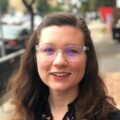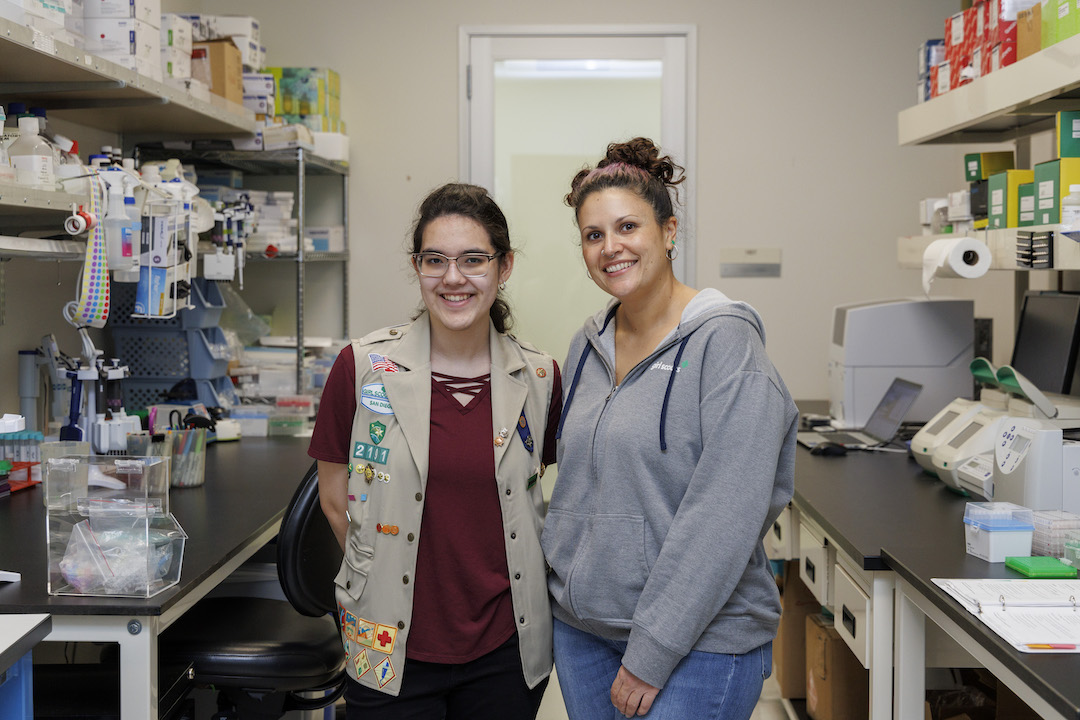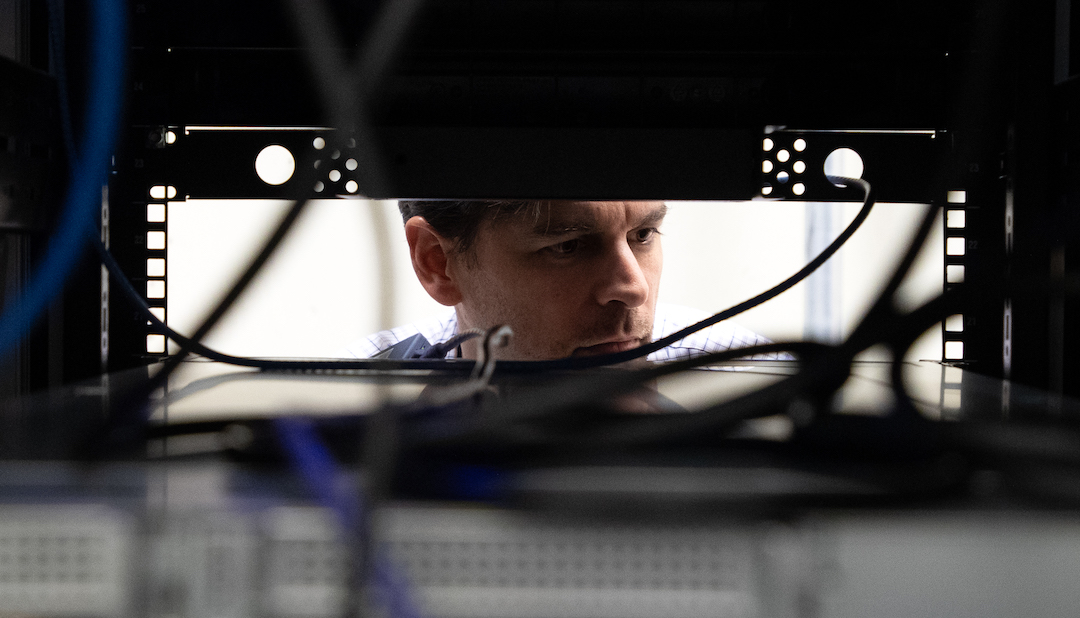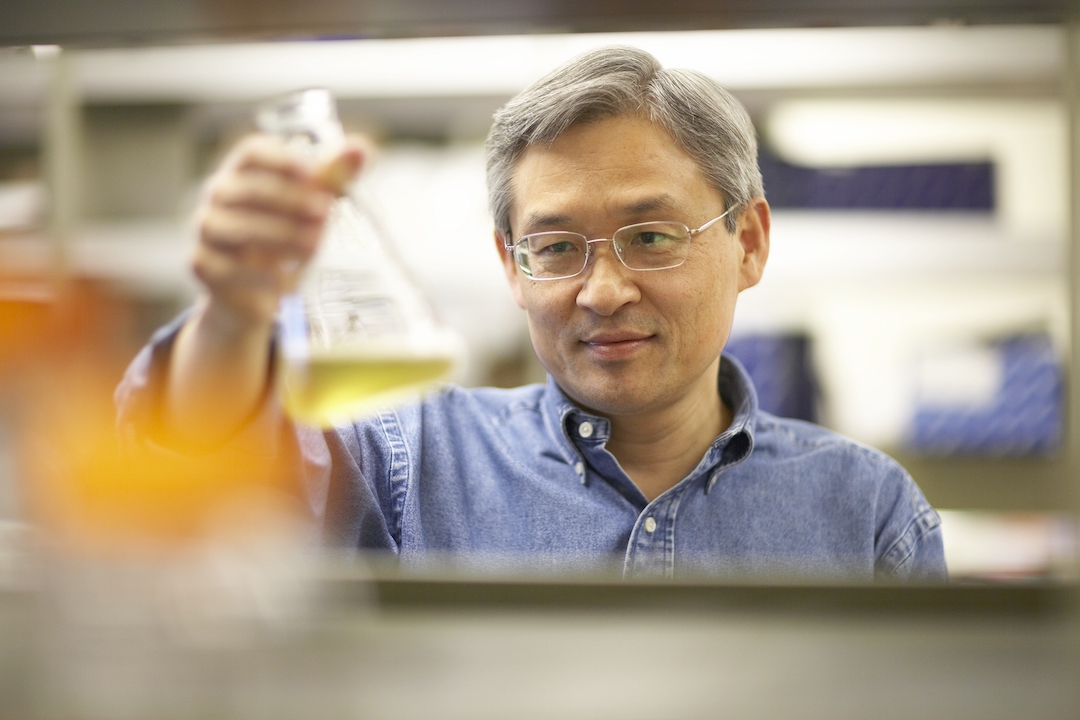Winning artists drew inspiration from the pandemic and the power of vaccines
La Jolla Institute for Immunology (LJI) is pleased to announce the winners of the 2021-2022 Art of the Immune System Student Competition:
- First place: Jennifer Hu, Canyon Crest Academy
- Second place: Neshama Reed, IDEA Center High School
- Third place: Kelly Dai, Canyon Crest Academy
- Runner up: Sofia Nielsen, Notre Dame Academy
The competition, now finishing its second year, welcomed pieces from students across San Diego County. The goal of the program is to encourage students to think creatively about science and medical research.
The 2021-2022 competition drew entries from students at six schools in five school districts. The student artists could use any medium to share their perspective. For inspiration, student artists were invited to attend a series of live Q&A sessions with LJI researchers.
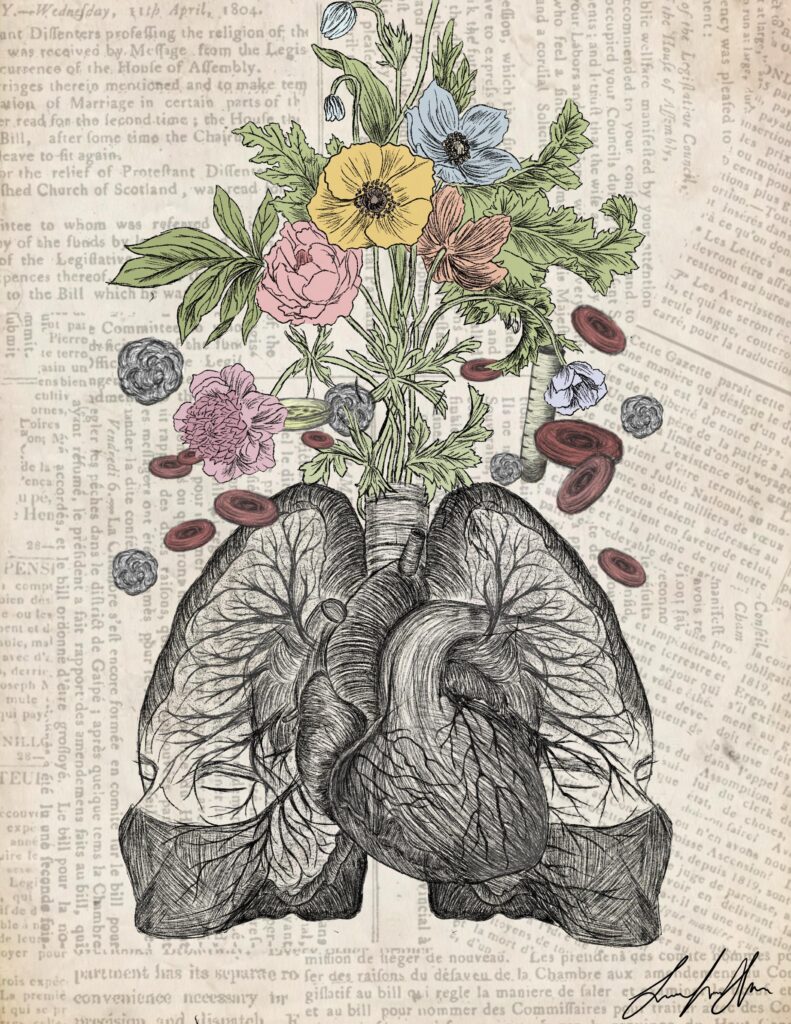
First place winner Jennifer Yu illustrated the vulnerability and power of the lungs and heart.
Jennifer Hu’s winning piece is a digital painting showing the lungs and heart blooming with flowers, test tubes and red and white blood cells. The piece balances the damage of COVID-19 with the body’s amazing ability to fight infections.
“Flowers are displayed to highlight the importance of the immune system in maintaining our health, especially when facing viruses,” explains Hu. “Lungs contain faces with masks to recognize the vital researchers and healthcare workers and their significant contributions in maintaining health and safety during the pandemic.”
Hu says she learned a lot about respiratory health as she created the piece, including how COVID-19 can damage the lungs. “I’ve also learned about our immune system, such as how white blood cells play a vital role in maintaining immunity,” Hu says.
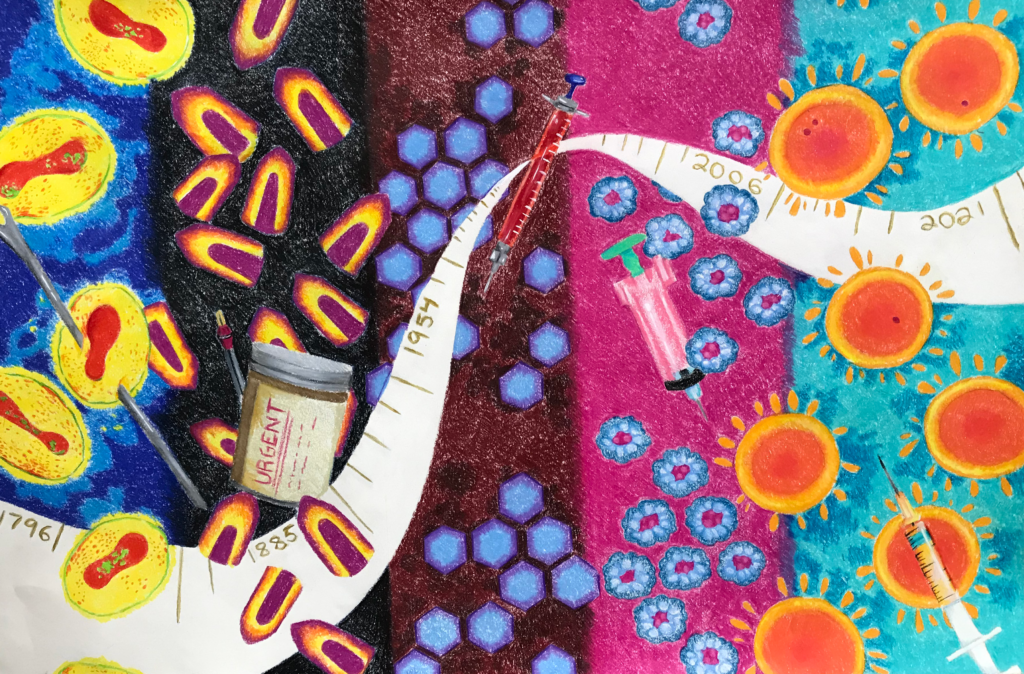
Second place winner Neshama Reed used colored pencils to illustrate milestones in vaccine history.
Second-place winner Neshama Reed chose to use colored pencils to illustrate the evolution of vaccines throughout history. From left to right, she depicted smallpox and the 1796 cowpox inoculation, rabies and the 1885 rabies vaccine, polio and the Salk vaccine, HPV and the 2008 HPV vaccine, and COVID-19 and the current vaccines.
“Each panel depicts the vaccine superimposed against a colored version of the virus under an electron microscope,” Reed says.
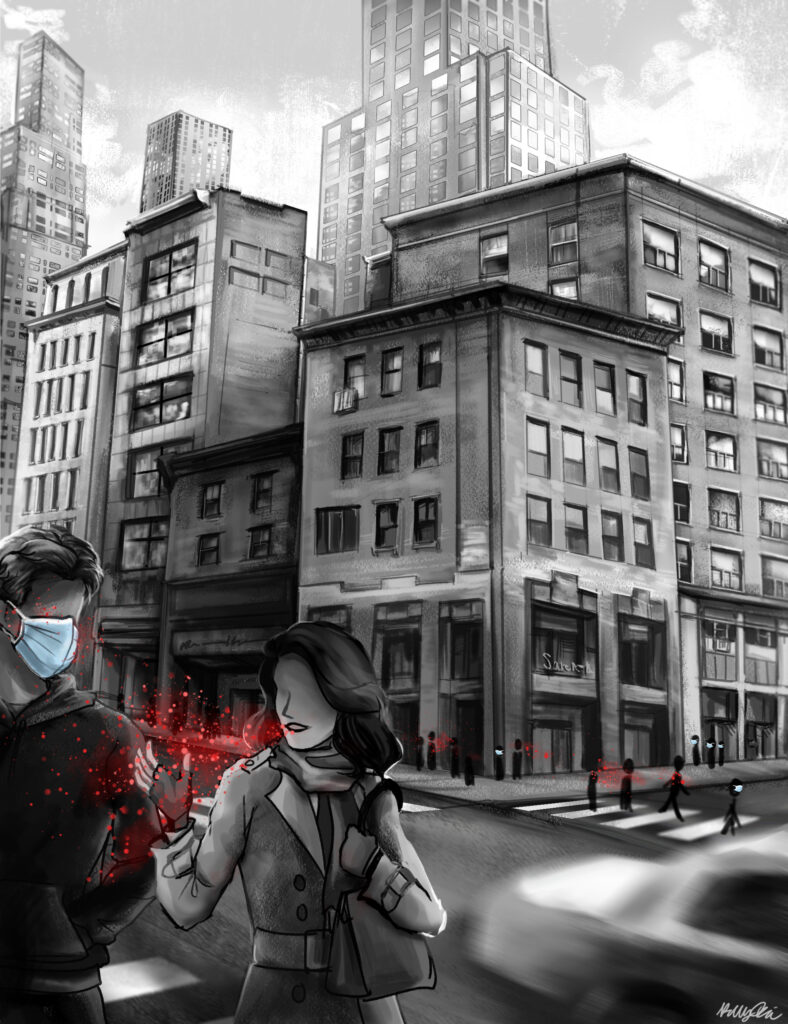
Third place winner Kelly Dai illustrated the importance of public health policies during the pandemic.
Third-place winner Kelly Dai focused on the importance of collective responsibility in stopping COVID-19. Her piece shows how a masked figure is reducing the spread of SARS-CoV-2 to people around him, while an unmasked woman is putting her community at risk.
As she assembled her piece, Dai looked at the research behind mask-wearing and how SARS-CoV-2 spreads. “I concluded that it is extremely important that everybody contributes and wears a mask regardless of whether they believe they have COVID-19 or not,” says Dai.
As the competition winners, Hu, Reed and Dai’s work will be featured in the next issue of the LJI magazine, Immune Matters. Hu will also receive an iPad and membership in the The Guild of Natural Science Illustrators.
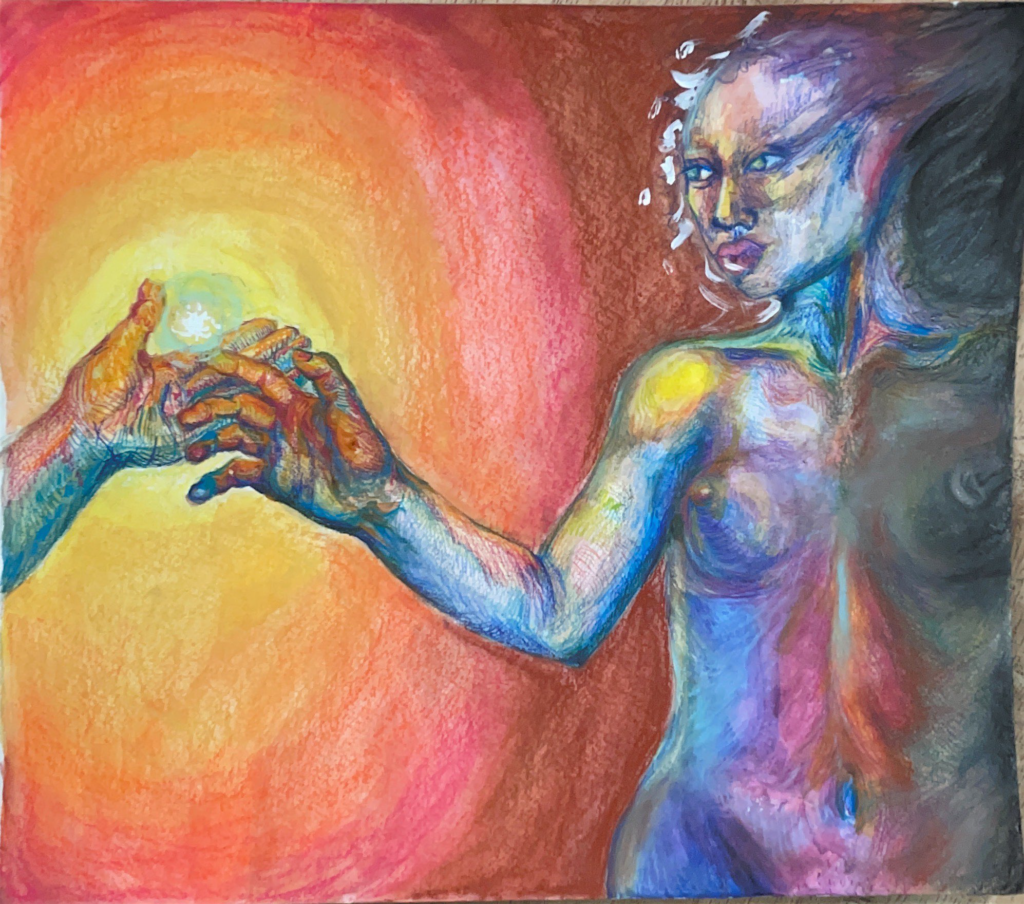
Runner up Sofia Nielsen used mixed media to depict her mother’s experience with breast cancer.
Runner up Sofia Nielsen used her piece to share how cancer has affected her family. Her mixed media piece shows a human figure reaching toward a bright light, meant to represent healing.
“I was inspired to create this piece by my mother, a survivor of stage three breast cancer,” says Nielsen. “She was diagnosed in November of 2016. I learned a lot about how cancer is treated, and also how people who have cancer feel. When I saw this art contest I knew I had to draw something to honor the patients and the doctors, scientists and medical staff.”
In the process of making the piece, Nielsen says she had a chance to reflect on all the medical care and research that helped her mother survive, including advances in chemotherapy and experimental drug trials.
“Scientists and doctors will never stop searching for cures as long as people are suffering and dying from such illnesses,” says Nielsen.
Thank you to the 2021-2022 judges and competition advisors: Jenna Hambrick, Samuel Myers, Ph.D., Alison Tarke, Clare Grotting, Matt Ellenbogen, Gina Kirchweger, Ph.D., and Chi Essary.
We are grateful to our Q&A volunteers: Alison Tarke, Ph.D., Klaus Ley, M.D., Daniela Weiskopf, Ph.D., Erik Ehinger, Ph.D., Estefania Quesada Masachs, M.D., Ph.D., and Isaac F. López-Moyado, Ph.D.
Additional entries:
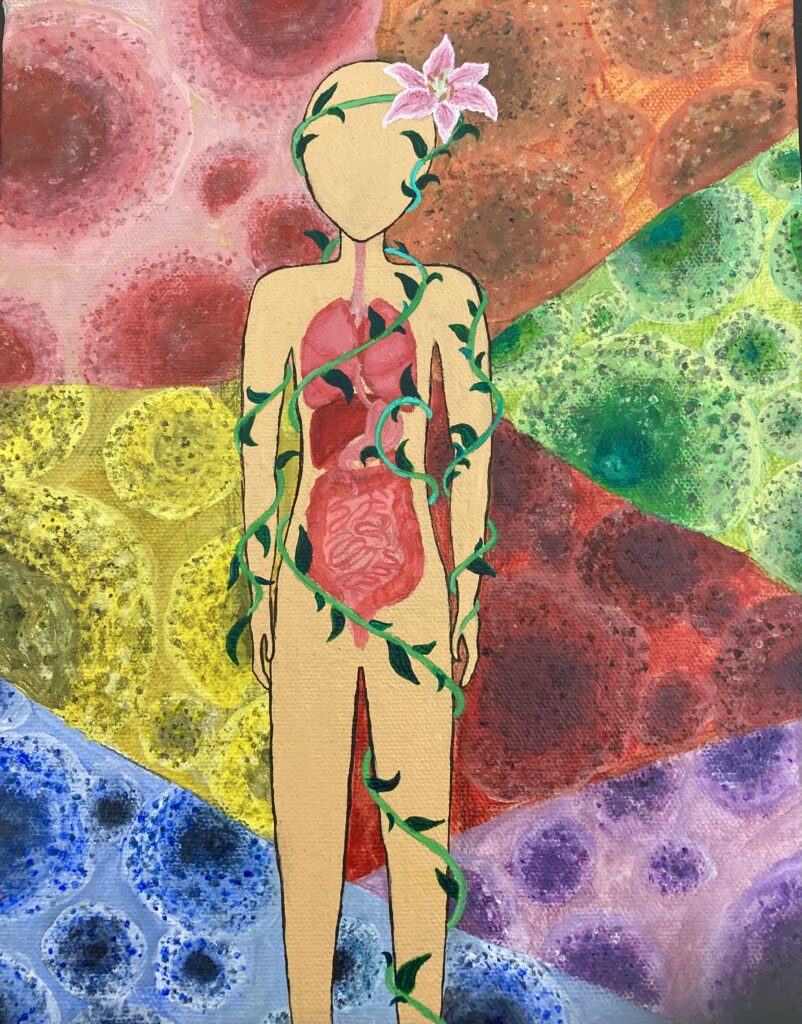 Yasmin Binkier, Mission Hills High School
Yasmin Binkier, Mission Hills High School
Binkier writes: What inspired my artwork was my mom who had stage 4 lymphoma cancer. I demonstrated the lymphoma cells in my piece. I used acrylic paint for my piece. It is connected to immunology because lymphoma is a type of blood cancer caused by out of control lymphocytes. These white blood cells that grow out of control don’t function properly, as a result, they can’t help your immune system fight off infections well. The flower in this painting represents how my mom grew as a person while enduring the struggle of this disease.
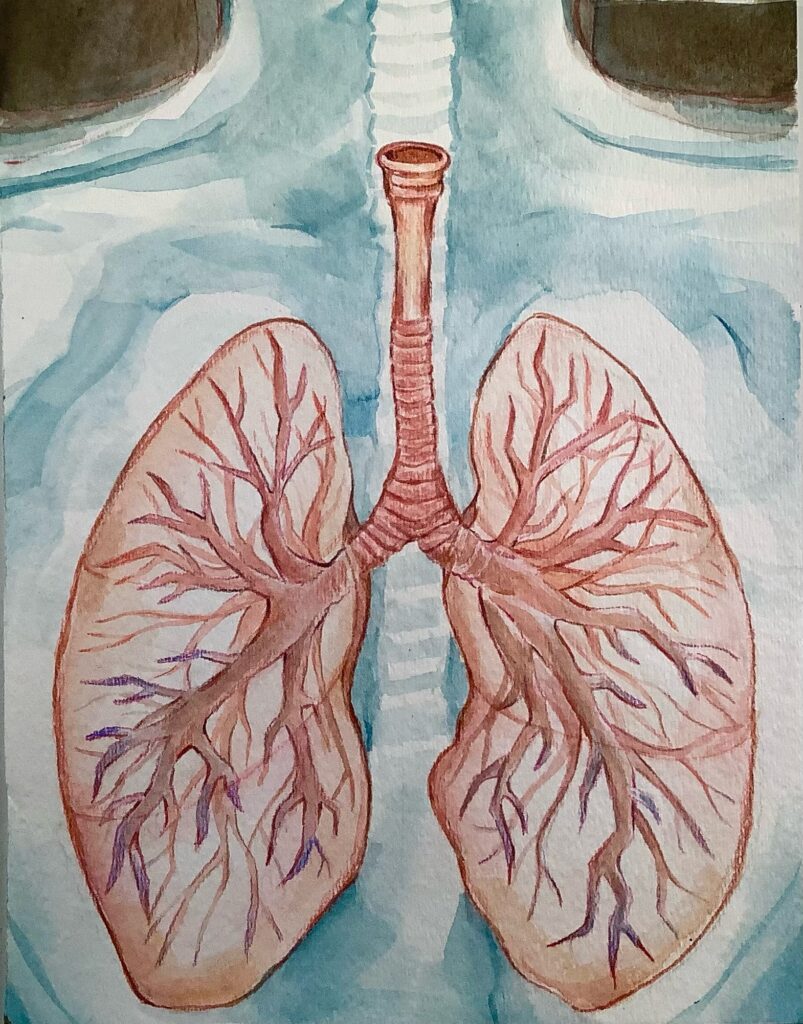 Isabel Lusky, Cathedral Catholic High School
Isabel Lusky, Cathedral Catholic High School
Lusky writes: I focused my artwork on the lungs, a key organ that has only become more of a concern with the pandemic. As lungs are thin, fragile structures, I found them to be comparable to glass within the body, and therefore gave the lungs a bottle-like opening. It is meant to allude to the importance of caring for lungs in daily practices, for they are vital to health, yet easily damaged. I choose to use mainly watercolor to portray the layered nature of lungs, with a translucent texture best depicted through a translucent medium. Colored pencils were also used to define shadows and lines. In the process of researching for the artwork, I learned quite a bit about the actual structure of the lungs, and was surprised to see how the lungs actually fit into the complete body in diagrams, which isn’t often shown.
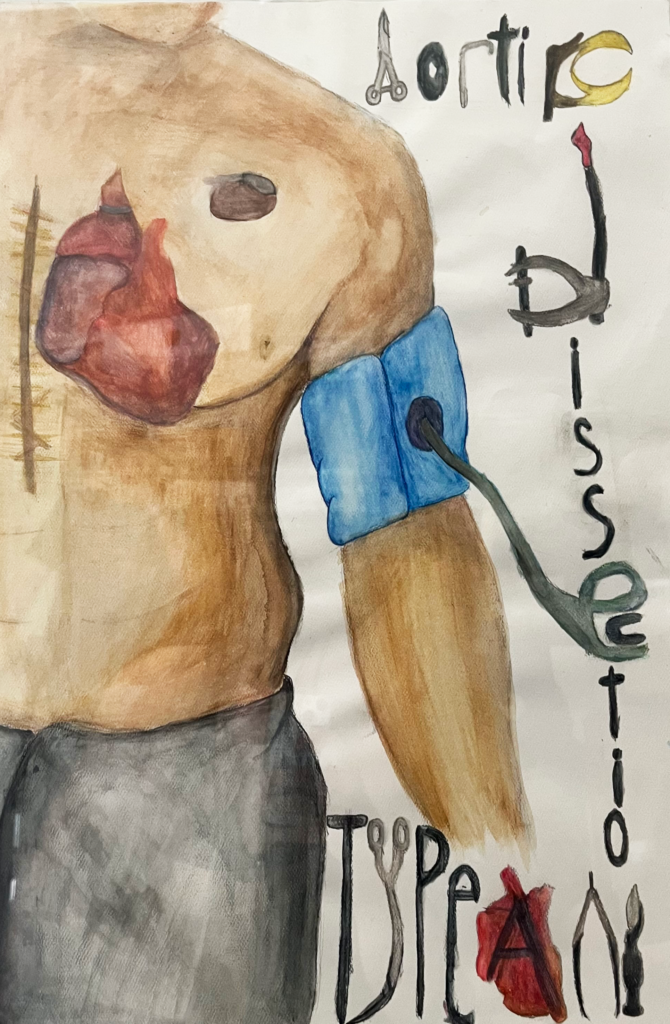
Laurel Bering, Carlsbad High School
Bering writes: For the competition this year I used watercolor and painted a piece of my dad. Around August of 2018 I believe, my dad had an Aortic Dissection Type A and he had a mechanical heart valve put in as well as a pacemaker. In the painting in order to spell out Dissection Type A, I used tools that they would use to perform the surgery.
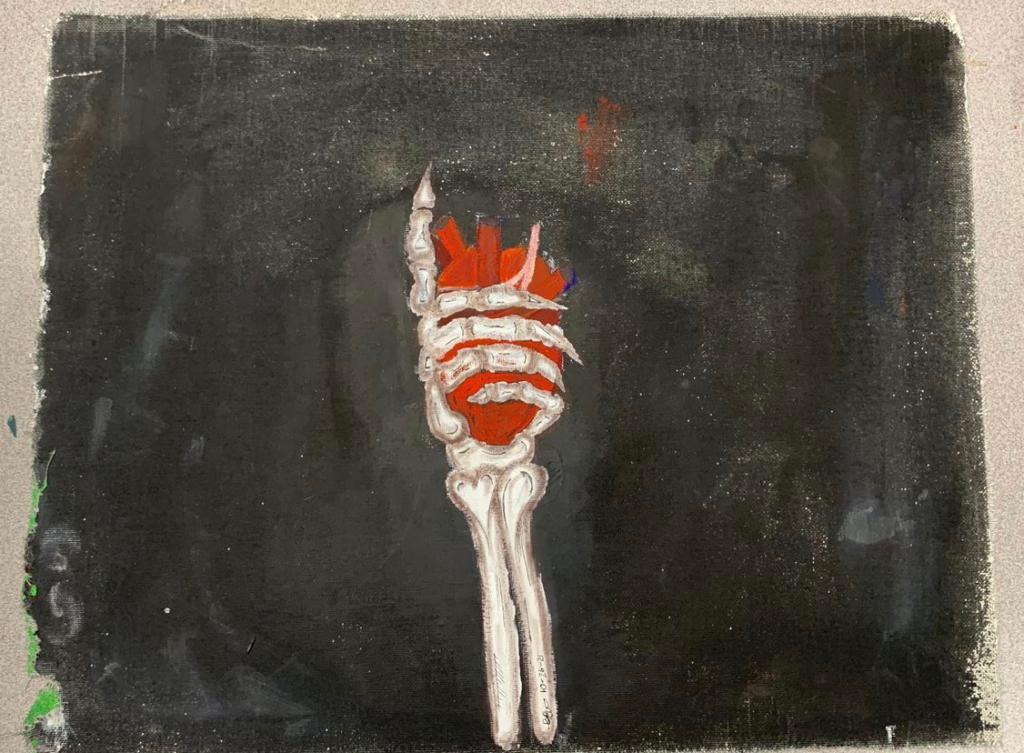 Brooke Bubnis, Carlsbad High School
Brooke Bubnis, Carlsbad High School
What inspired me was I see a lot of hearts in art class so it inspired me to choose a heart and i chose a skeleton hand because I thought it was cool. The mediums I chose was a cut out of the back of a canvas and paints.
